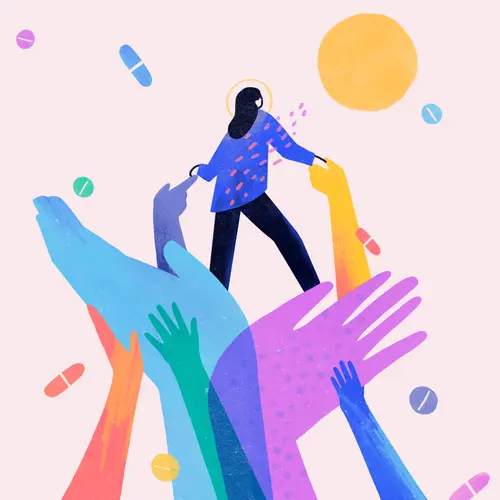By Sophia Ononye-Onyia, PhD, MPH, MBA
I was born in Enugu, Nigeria. Malaria was a gruesome reality for all of us. In fact, a child dies from malaria every two minutes, according to the World Health Organization (WHO). So, I was obviously ecstatic when the WHO announced its recommendation for widespread use of the first malaria vaccine on October 6, 2021. This RTS,S/AS01 (RTS,S) malaria vaccine is approved for children from 5 months of age in sub-Saharan Africa and other regions with moderate to high transmission of the most lethal malarial pathogen, Plasmodium falciparum.
There are obvious questions that come to mind, including the simplest, why did it take so long for a vaccine to be developed for a disease that kills more than 250,000 African children yearly? Is it because we deprioritized infectious diseases prior to the COVID-19 pandemic? Is it a much larger issue that is related to the social determinants of health and health equity? In other words, are socioeconomically disadvantaged individuals at higher risk for virtually all diseases due to lower access and prioritization?
I remember suffering from malaria as a teenager -- the aches and pains, high fevers, chills, loss of appetite. Fortunately, I survived because my parents could afford the more effective Artemisinin-based combination (ACT) therapies versus the more affordable chloroquine, which many still rely on despite its proven ineffectiveness on the lethal P. falciparum pathogen. Afterwards, I went ahead to obtain several advanced degrees in the United States, including a PhD in Medicinal Chemistry and a master’s degree in Public Health (MPH) because I wanted to play a role in amplifying scientific innovation by becoming a leader in the life sciences. For me, the most unique aspect of the life science industry is its ability to bring hope and optimism to the masses through breakthrough science that range from preventative therapies such as vaccines to tertiary care that is powered by emerging technologies such as artificial intelligence, (AI), machine learning (ML) and digital technology.
Yet, there are some days when I wonder how many lives would have been saved if the same synthetic pesticide, dichlorodiphenyltrichloroethane (DDT), which was used to essentially eradicate malaria in the United States and other Western countries was also used in sub-Saharan Africa and other WHO regions such as South-East Asia. There are many who still maintain that Rachel Carson’s highly controversial 1962 book, Silent Spring, sparked a government investigation into the widespread use of pesticides that eventually led to the ban of DDT based on concerns about cancer and threats to birds. Of note, DDT was used in the second half of World War II to limit the spread of malaria and typhus among civilians and troops, and the Swiss Chemist Paul Hermann Müller was awarded the 1948 Nobel Prize in Physiology or Medicine "for his discovery of the high efficiency of DDT as a contact poison against several arthropods."
The 21st century has showcased the vast disparities between the “haves and have-nots” when it comes to the iron triangle of public health i.e. access, cost and quality. As I shared in a business school presentation on financial risk management, emigrating from Nigeria to the United States essentially meant that I could potentially increase my life expectancy from an average of 53 years to 79 years -- a difference of more than 25 years. I am thrilled that this malaria vaccine can ultimately save millions of lives while also improving the life expectancy for future generations. There is no doubt that the global shared experience from the ongoing COVID-19 pandemic has highlighted the need for a renewed focus on infectious disease prevention. Technology is evolving to the point where we have casual space travel for the ultra-rich. Conversely, the poor, developing nations are still in dire need of basic life-saving vaccines and effective therapies against constantly evolving pathogens. While I applaud the approval of this malaria vaccine, there is still a lot more to do. We can no longer turn a blind eye to these infectious diseases because globalization and international travel are real phenomena. Investments in infectious disease might not be as financially rewarding as some chronic diseases like cancers. But the fact that a certain pervasive virus has essentially slowed down economies, global travel and many forms of socialization means that we need to have a deeper respect and weaponry for infectious diseases. We must continue to invest in novel solutions that can help to reduce the physiological and psychosocial disease burden.
Public-private partnerships are key to effective innovation. For example, the malaria vaccine is a result of 30 years of research and development by the British pharmaceutical company, GlaxoSmithKline (GSK) through a partnership with the global public health nonprofit, PATH, with support from a network of African research centers and 15 years of catalytic funding for late-stage development by the Bill & Melinda Gates Foundation. I must also point out that adults also suffer from malaria and contribute to the over 200 million global annual cases for this deadly disease. So naturally, the next wave of innovation in the malaria vaccine space is to also develop a vaccine for adults, particularly the immunocompromised, who may be at a higher risk of transmission and potentially death.
In closing, scientific innovation is ultimately a story about optimism—researchers who must remain resilient in advancing drug development and patients who can experience better quality of lives because of these transformative therapies. We must continue to do all we can to bridge the health equity gap by devising novel solutions for lethal pathogens.
Sophia Ononye-Onyia, PhD, MPH, MBA, is a Yale-trained molecular oncologist and founder of The Sophia Consulting Firm, a WBENC-certified, New York City life-sciences marketing and communications consultancy. She is also the host of her firm’s Amplifying Scientific Innovation® Video Podcast.
This article is part of WebMD’s contributor program, which lets people and organizations outside of WebMD submit articles for consideration on our site. Have an idea for a submission? Email us at [email protected].
